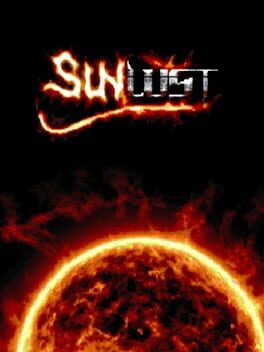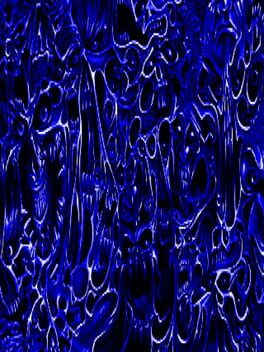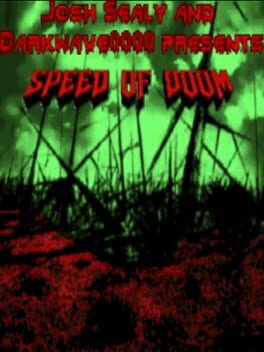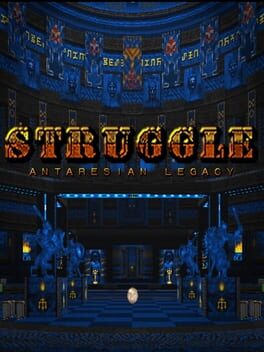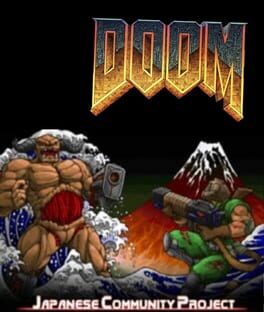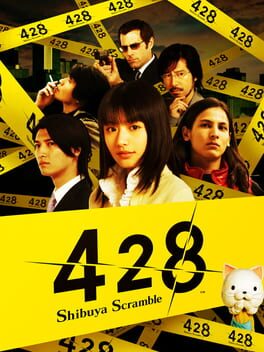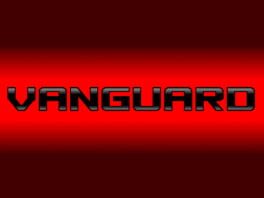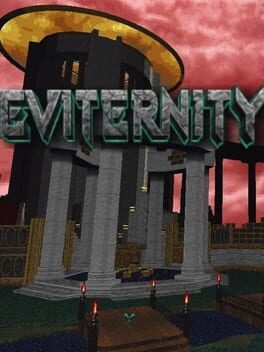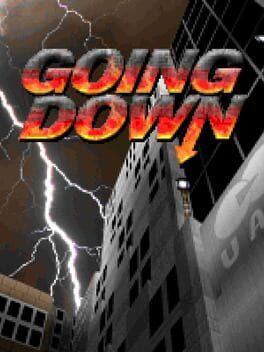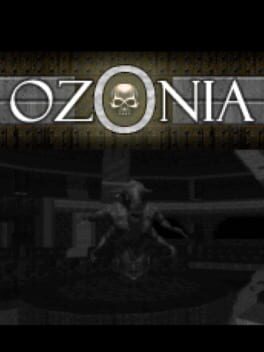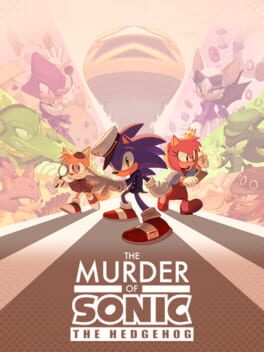Terrace
2010
1995
It's a humbling feeling knowing that you found your favorite video game of all time over a decade ago, and that no video game you play in the future will ever beat it. This might sound arrogant or self-assured to some, but hopefully those who understand the power of coming home understand what I mean. I try to replay this game once every year to recapture that feeling. The credits never fail to put a tear in my eye.
2015
One of the most endearing aspects of Doom mapping is how distinct and unique the maps have become over time. While mods that provide an extensive overhaul to Doom's aesthetic have always existed, like 1994's Aliens TC, it wasn't until some years later that this practice became commonplace. One look at the most noteworthy and influential megawads of the 2010s is all you need to confirm this. Ancient Aliens, Eviternity, and Back to Saturn X are just three examples of blockbuster megawads with not just their own unique texturing, but also well-defined gameplay loops. Of course, the uniqueness of different Doom maps extends not just to their visuals, but also their feel, what it's like to play it. Oftentimes these aspects compliment each other directly. A good Doom map, then, is one that establishes its own unique identity both on a surface level as well as a deeper one.
This is something Sunlust accomplishes in spades. Sunlust looks nothing like typical Doom, and it feels nothing like typical Doom, either. But somehow, to me, Sunlust IS Doom. It is Doom because it is the megawad that most embodies the definition of the word. The name of the game with Sunlust is awe-inspiring. You stand in awe of the grand architecture. The dazzling environments. And, of course, the epic fights. A recurring motif in Sunlust is that it will start a fight with every enemy facing away from you, unalerted to your presence. With the initiative on you to begin the fight, you're free to take a moment both to admire the precise combat geometry as well as to wonder how the hell you're going to make it out of this alive.
And like I've said with many of my other Doom reviews, don't be put off by the legends of this megawad's difficulty. Don't feel like you have to play on ultra-violence. I sure didn't, and I still loved it! I promise the lower difficulties are much more manageable.
Sunlust, I like to imagine, is Doom in its purest, most distilled form. It is the height of the idea of Doom as a "combat puzzle" game, where each encounter takes careful thought, deliberate preparation, and precise execution in order to best. It is a perfect marriage of visual aesthetics and gameplay style. It is, simply, a work of art.
This is something Sunlust accomplishes in spades. Sunlust looks nothing like typical Doom, and it feels nothing like typical Doom, either. But somehow, to me, Sunlust IS Doom. It is Doom because it is the megawad that most embodies the definition of the word. The name of the game with Sunlust is awe-inspiring. You stand in awe of the grand architecture. The dazzling environments. And, of course, the epic fights. A recurring motif in Sunlust is that it will start a fight with every enemy facing away from you, unalerted to your presence. With the initiative on you to begin the fight, you're free to take a moment both to admire the precise combat geometry as well as to wonder how the hell you're going to make it out of this alive.
And like I've said with many of my other Doom reviews, don't be put off by the legends of this megawad's difficulty. Don't feel like you have to play on ultra-violence. I sure didn't, and I still loved it! I promise the lower difficulties are much more manageable.
Sunlust, I like to imagine, is Doom in its purest, most distilled form. It is the height of the idea of Doom as a "combat puzzle" game, where each encounter takes careful thought, deliberate preparation, and precise execution in order to best. It is a perfect marriage of visual aesthetics and gameplay style. It is, simply, a work of art.
2022
You'd never think it was possible, but I've gotten very emotionally attached to this short, dozen pack mapset. As such, this is going to be a somewhat personal review. Apologies in advance.
Altars of Madness' approach to Doom is to focus squarely on compact combat puzzles with calculated geometry. As such, it is pretty clearly inspired by the work of Ribbiks. It also forces pistol starts each map. Its brevity, conciseness, and general gameplay loop make it ideal for new Doom players looking to hone their skills.
For me, I took much longer to beat these twelve short maps than you might think. That's because I didn't play Altars of Madness with the intention of pushing through to the end. Somehow, one way or another, Altars of Madness became my guidepost. Something I would check in on every now and then while I played other Doom WADs. When I started playing this mapset, I struggled. A lot. The forced pistol starts and dense combat seemed like they would be too much for me. But as I played other Doom WADs and circled back to this one, I found the maps getting easier. Yes, in a weird way, because of my awkward way of playing this game, the difficulty curve was almost inverted.
I have since played quite a lot of Doom, and I've wildly fallen in love with some blockbuster megawads. Altars of Madness certainly isn't as good as those, but it's special to me. I'm going to miss this mapset's watchful eye observing and rewarding my improvement.
Cheers to you, Alex Decker. For this mapset and your good taste in music.
Altars of Madness' approach to Doom is to focus squarely on compact combat puzzles with calculated geometry. As such, it is pretty clearly inspired by the work of Ribbiks. It also forces pistol starts each map. Its brevity, conciseness, and general gameplay loop make it ideal for new Doom players looking to hone their skills.
For me, I took much longer to beat these twelve short maps than you might think. That's because I didn't play Altars of Madness with the intention of pushing through to the end. Somehow, one way or another, Altars of Madness became my guidepost. Something I would check in on every now and then while I played other Doom WADs. When I started playing this mapset, I struggled. A lot. The forced pistol starts and dense combat seemed like they would be too much for me. But as I played other Doom WADs and circled back to this one, I found the maps getting easier. Yes, in a weird way, because of my awkward way of playing this game, the difficulty curve was almost inverted.
I have since played quite a lot of Doom, and I've wildly fallen in love with some blockbuster megawads. Altars of Madness certainly isn't as good as those, but it's special to me. I'm going to miss this mapset's watchful eye observing and rewarding my improvement.
Cheers to you, Alex Decker. For this mapset and your good taste in music.
2010
Speed of Doom is probably the most conflicted I've been on a Doom megawad, and the reason why is abundantly obvious to me. The essence of this megawad is its unique synthesis of classical inspirations with forward-thinking originality. It is a game of balances, and nowhere is that clearer than its authorship. Speed of Doom features the work of two mappers, Joshy and Darkwave, who split the 32 map load into an even 16 each. The game continuously alternates between each mapper, with Joshy handling the odd-numbered maps and Darkwave handling the even-numbered maps (with the exception of the two secret maps).
There's no nice way to say this, so I'll be blunt. If this mapset were entirely Darkwave's work, I'd be inclined to bump it up a point. If it were entirely Joshy's, I'd be inclined to bump it down one. On the whole, I find Darkwave to be a much more engaging and fair mapmaker than Joshy. Darkwave's work fluctuates between pensive and explosive, atmospheric and dramatic. There is a strong sense of momentum in each of Darkwave's maps, which makes them highly rewarding to pistol start.
Joshy, on the other hand, has a frustrating penchant for cramped spaces and awkward weapon progression from pistol start. Speaking of pistol start, I should probably mention that I beat every map pistol start with the exception of one: Poison Ivy II. This map is everything wrong with Joshy's style in a nutshell. I beat it, of course, but only after a swift "get weapons" input into the console. Now, all of this is not to say that I think Joshy's maps are all bad. In fact, there are few that I quite enjoy. But the simple matter is that I find his maps generally much less engaging than Darkwave's.
Speed of Doom's back and forth between its two co-authors is what defines its unique progression, but the difference in quality between its two co-authors' styles is ultimately what keeps me from calling it a new favorite. It's absolutely worth playing for any classic Doom fan, just know that, for some, Joshy's style might be a more acquired taste than Darkwave's. Then again, who's to say the opposite isn't also true?
There's no nice way to say this, so I'll be blunt. If this mapset were entirely Darkwave's work, I'd be inclined to bump it up a point. If it were entirely Joshy's, I'd be inclined to bump it down one. On the whole, I find Darkwave to be a much more engaging and fair mapmaker than Joshy. Darkwave's work fluctuates between pensive and explosive, atmospheric and dramatic. There is a strong sense of momentum in each of Darkwave's maps, which makes them highly rewarding to pistol start.
Joshy, on the other hand, has a frustrating penchant for cramped spaces and awkward weapon progression from pistol start. Speaking of pistol start, I should probably mention that I beat every map pistol start with the exception of one: Poison Ivy II. This map is everything wrong with Joshy's style in a nutshell. I beat it, of course, but only after a swift "get weapons" input into the console. Now, all of this is not to say that I think Joshy's maps are all bad. In fact, there are few that I quite enjoy. But the simple matter is that I find his maps generally much less engaging than Darkwave's.
Speed of Doom's back and forth between its two co-authors is what defines its unique progression, but the difference in quality between its two co-authors' styles is ultimately what keeps me from calling it a new favorite. It's absolutely worth playing for any classic Doom fan, just know that, for some, Joshy's style might be a more acquired taste than Darkwave's. Then again, who's to say the opposite isn't also true?
Although it isn't perfect, Struggle is one of the most significant and impactful Doom megawads ever crafted. Antares is in many ways a mapmaker in a category of his own, as every level here sports astounding attention to detail. There are a lot of reasons for this. Every map has a palpable atmosphere that feels tangible and lived-in. Though the settings are fantastical, they feel real, and that isn’t an easy feat in classic Doom. On top of that, Antares' liberal use of one-way doors allows sections of each map to link together surprisingly naturally. If you're ever looking to backtrack, Antares has your back.
But where Struggle really shines, of course, is the combat. The megawad's beefed up weapon set features a replacement for every weapon, with the sole exception of the super shotgun (you can't improve perfection). These new weapons are on the whole much more dangerous than the old arsenal, particularly the guns akimbo, a lightning fast chaingun replacement that stunlocks most enemies. The grenade launcher, which fittingly replaces the rocket launcher, isn't quite as good at crowd control as its predecessor, though the absolutely meteoric Leichenfaust, the BFG9000 replacement, more than makes up for this. Also, the melee weapon being a hammer is a very cool nod to Oldboy, a favorite film of both Antares and myself.
Antares throws in a few custom monsters and provides some well-rounded buffs to the returning bestiary, making seemingly familiar encounters more dangerous than players might expect. Combat encounters don't particularly lean into slaughter-esque high monster counts until the end, though don't take that to mean that this game is easy. Antares' masterfully unique flavor of classic Doom combat is delightfully strategic, with arenas and monster placement rewarding quick thinking and mastery of your new arsenal.
I would highly recommend playing Struggle with a pistol start each map. Antares practically litters the floor with ammo, so you'll never be short on that. Each map's pacing of finding its weapons is deliberate and progressively brisk. Each instance of finding the Leichenfaust feels like an event unto itself.
Unfortunately, Struggle isn't perfect. While it is doubtlessly a gorgeous game to look at, these environments tend to blend together. Most Struggle maps can be sorted into one of two visual categories: techbase or primary color demon domain. The latter category is almost entirely blue, though there is at least one red map and one green map. Again, it's not that the maps look bad, just that many of them look the same. This monotony is a difficult issue to completely ignore; especially early on, where techbases reign supreme. That so many of the levels look so similar visually feels like a disservice to the undeniable love and care that each one was crafted with.
There's also the final boss, which is unsurprisingly also a disappointment. Classic Doom megawads have been known to fumble the bag at the last moment, but Struggle's final map is a rather egregious case. Thankfully, this is mostly made up for by a legendary preceding duology of maps. Map30 notwithstanding, Antares doesn't seem to know how to make a bad map, but maps 28 and 29 are on another level entirely.
I apologize if this review seems overly long, but I suppose, in a way, I'm just astonished by how much a Doom megawad can make me feel. Struggle is perfectly named not just for its difficulty, but also for its creation. Playing through this game, you can't help but stop and admire how tirelessly Antares must have worked to make everything fit so perfectly. The effort that this one-man project evidently took is equal parts overwhelming and inspiring. I'm beyond grateful not just for Antares, but also for all the modders and coders who came before him, who laid the groundwork for this masterpiece.
Struggle is the story of one man pursuing what is clearly his passion, endeavoring to create a Doom megawad that is fast-paced, carefully rebalanced, and immaculately detailed both visually and in terms of its progression. While there are a few issues here and there, namely the monotony of the environments and the disappointing final boss, I think there's no doubt that Antares succeeded in his goal.
But where Struggle really shines, of course, is the combat. The megawad's beefed up weapon set features a replacement for every weapon, with the sole exception of the super shotgun (you can't improve perfection). These new weapons are on the whole much more dangerous than the old arsenal, particularly the guns akimbo, a lightning fast chaingun replacement that stunlocks most enemies. The grenade launcher, which fittingly replaces the rocket launcher, isn't quite as good at crowd control as its predecessor, though the absolutely meteoric Leichenfaust, the BFG9000 replacement, more than makes up for this. Also, the melee weapon being a hammer is a very cool nod to Oldboy, a favorite film of both Antares and myself.
Antares throws in a few custom monsters and provides some well-rounded buffs to the returning bestiary, making seemingly familiar encounters more dangerous than players might expect. Combat encounters don't particularly lean into slaughter-esque high monster counts until the end, though don't take that to mean that this game is easy. Antares' masterfully unique flavor of classic Doom combat is delightfully strategic, with arenas and monster placement rewarding quick thinking and mastery of your new arsenal.
I would highly recommend playing Struggle with a pistol start each map. Antares practically litters the floor with ammo, so you'll never be short on that. Each map's pacing of finding its weapons is deliberate and progressively brisk. Each instance of finding the Leichenfaust feels like an event unto itself.
Unfortunately, Struggle isn't perfect. While it is doubtlessly a gorgeous game to look at, these environments tend to blend together. Most Struggle maps can be sorted into one of two visual categories: techbase or primary color demon domain. The latter category is almost entirely blue, though there is at least one red map and one green map. Again, it's not that the maps look bad, just that many of them look the same. This monotony is a difficult issue to completely ignore; especially early on, where techbases reign supreme. That so many of the levels look so similar visually feels like a disservice to the undeniable love and care that each one was crafted with.
There's also the final boss, which is unsurprisingly also a disappointment. Classic Doom megawads have been known to fumble the bag at the last moment, but Struggle's final map is a rather egregious case. Thankfully, this is mostly made up for by a legendary preceding duology of maps. Map30 notwithstanding, Antares doesn't seem to know how to make a bad map, but maps 28 and 29 are on another level entirely.
I apologize if this review seems overly long, but I suppose, in a way, I'm just astonished by how much a Doom megawad can make me feel. Struggle is perfectly named not just for its difficulty, but also for its creation. Playing through this game, you can't help but stop and admire how tirelessly Antares must have worked to make everything fit so perfectly. The effort that this one-man project evidently took is equal parts overwhelming and inspiring. I'm beyond grateful not just for Antares, but also for all the modders and coders who came before him, who laid the groundwork for this masterpiece.
Struggle is the story of one man pursuing what is clearly his passion, endeavoring to create a Doom megawad that is fast-paced, carefully rebalanced, and immaculately detailed both visually and in terms of its progression. While there are a few issues here and there, namely the monotony of the environments and the disappointing final boss, I think there's no doubt that Antares succeeded in his goal.
Definitely one of the more inconsistent Doom megawads I've ever played, but damn do some of these maps have such great soul. Most of the best are very unique, typically prioritizing aesthetic charm over combat refinement. This is something that's sure to be divisive among people that play a lot of classic Doom WADs, but I personally think it's a very nice change of pace. I played this with the Final Doomer weaponset, which is very unique and adds to the mapset's strange charm. Apparently there's a sequel in development, which hopefully will up the refinement to create a generally more balanced experience. And that's really one of the best things I can say about this megawad: that despite all my issues with some of its maps, I'm still very excited for more of Japan's unique flavor of Doom.
2011
For a variety of reasons, Vanguard is probably one of the best introductions to Doom modding there is. For one thing, it's a very well-paced episode replacement, not short enough to beat in one sitting, but not long enough to feel like it's drags. For another, it's authored by skillsaw, who's undoubtedly one of the most talented and well-rounded mappers in classic Doom. Vanguard is also his only major work without any custom monsters whatsoever (others being Lunatic, Valiant, and Ancient Aliens, which all have at least two custom monsters each). But perhaps most importantly is the scope of gameplay variance captured in this WAD. There's bite-sized maps, adventure maps, arena maps, slaughter-lite maps, you name it, all of which are anchored by a very reasonable difficulty curve. While Vanguard seems unassuming on the surface, it's a classic through and through, and highly recommended for anyone wanting to dip their toes in the wonderful world of Doom modding.
2019
I don't buy into the hype for this as much as some other people, namely those who hail it as the greatest megawad of the modern era. Regardless, I think it has an undeniable quality, particularly in the visual department. This game is undeniably gorgeous, with each chapter's style feeling distinct and lived in. In this sense, I think the texture pack is the highlight of this megawad. Unfortunately, I don't vibe with Dragonfly's level design as much as some others, as I find his combat setpieces a little bland. It's certainly not bad, I just don't think it justifies all the hype. Still, Eviternity is a uniquely grand adventure that no Doom fan should miss.
...Oh yeah, and Dehydration can get bent. Dropping an hour long map as the penultimate level in a random chapter is seriously not cool.
...Oh yeah, and Dehydration can get bent. Dropping an hour long map as the penultimate level in a random chapter is seriously not cool.
2014
This stupendous megawad has very rightly been hailed as some of the best that Doom modding has to offer. Attention
is often drawn to its brisk pacing, snappy combat, witty humor, phenomenal use of Doom 2's stock textures, palpable atmosphere, and its singular vision as a one-man creative project. But I want to point out something else that Going Down does very well, which is its difficulty. Doom aficionados who play exclusively on ultra-violence will often point to this as one of Doom's most difficult offerings, but those who cower at that warning (such as myself), fear not. While ultra-violent is the bread and butter of most seasoned Doom players, the lower difficulty settings in Going Down are just as well-balanced. What has the reputation of being notoriously difficult is, in fact, more accessible than you might think. Either way, Doom casuals shouldn't let Going Down's difficult reputation and penchant for "slaughter maps" (somewhat debatable) put them off. This is a brilliant work of horror comedy fun that no FPS fan should miss.
is often drawn to its brisk pacing, snappy combat, witty humor, phenomenal use of Doom 2's stock textures, palpable atmosphere, and its singular vision as a one-man creative project. But I want to point out something else that Going Down does very well, which is its difficulty. Doom aficionados who play exclusively on ultra-violence will often point to this as one of Doom's most difficult offerings, but those who cower at that warning (such as myself), fear not. While ultra-violent is the bread and butter of most seasoned Doom players, the lower difficulty settings in Going Down are just as well-balanced. What has the reputation of being notoriously difficult is, in fact, more accessible than you might think. Either way, Doom casuals shouldn't let Going Down's difficult reputation and penchant for "slaughter maps" (somewhat debatable) put them off. This is a brilliant work of horror comedy fun that no FPS fan should miss.
2016
2021
2023
While the general consensus seems to be that you should go into this as blind as possible, I'll be the voice of dissent and say that you should do what works for you. If you, like me, tend to shy away from horror games, it might be worth watching a video essay first, and then playing the game afterwards, so that you feel "prepared." But if you feel like you can handle it, then you should definitely go for it blind. Either way, the video essays are definitely worth watching for their deep dives into the supplemental lore. Whatever way you decide to approach this wonderfully unique experience is fine. Just make sure you don't miss it.


